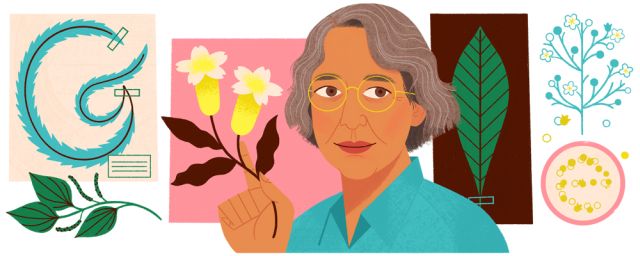
Google Doodle honored Ynes Mexía Sunday, marking the 94th anniversary of the day Mexía embarked on her first plant collection trip. “I was excited to get to the opportunity to help celebrate Ynés’ life, especially during Hispanic Heritage Month,” said Lois Lora, the Los Angeles-based guest artist who created the Doodle.
“To be a Latina illustrator illustrating someone of Mexican descent (like myself) is an honor,” Lora added. “It feels like there is a responsibility to introduce the world to special people like Ynés Mexia through a Google Doodle image.”
September 15 to October 15 is National Hispanic American Heritage Month when people and organizations join in paying tribute to the generations of Hispanic Americans who have influenced and enriched the United States. Lora said she hopes people become curious about who Ynés Mexia was and learn about her achievements.
“For this piece, I wanted to pull inspiration from the plant specimens Ynés discovered,” Lora explained. “There was a lot of research involved in finding these plants and representing them in a fun way. I used the plants to help spell out “Google” by finding clever ways for each letter to be arranged within this collage-like composition.”
More than 90 years after Mexía started plant discovery, scientists are still studying her samples, which are now housed in a number of major institutions around the world. Although she never completed her degree, Mexía gathered some 150,000 botanical specimens throughout her career.
Born in Washington D.C. in 1870 as a daughter of a Mexican diplomat, Ynes Mexía became a social worker in California. At age 51, she became interested in studying botany, joined the local Sierra Club, and soon after enrolled in special classes at UC Berkeley.
On September 15, 1925, Mexía began traveling with a group from Stanford University to Sinaloa, Mexico in search of rare botanical species. Despite falling off a cliff and fracturing her hand and some ribs, Mexía brought home around 500 specimens—50 of them previously undiscovered. After her inaugural plant discovery trip in 1925, Mexía continued journeying to uncover more species throughout Mexico, many of which were then named after her. The first was a flowering plant from the daisy family in 1928.
Mexía braved earthquakes, bogs, and poisonous berries to reach a remote volcano on the border of Colombia and Ecuador. “We started on the long journey back,” she wrote after collecting samples of the rare wax palm, “very tired, very hot, very dirty, but very happy.”
“As a Latina, it’s great to see Latin Americans’ lives and careers highlighted in such a special way,” she told Google. “I wasn’t aware of who Ynés Mexia was, but when I started the project and researched her life, I was amazed at her accomplishments. She found her passion at 55 years and did so much in her short career. I love learning about influential Latin Americans and how they contributed to the things we all we enjoy today.”
The U.S. Army Corps of Engineers has been tasked with…
Brown and Caldwell, a leading environmental engineering and construction firm,…
Humboldt State University, one of four campuses within the California…